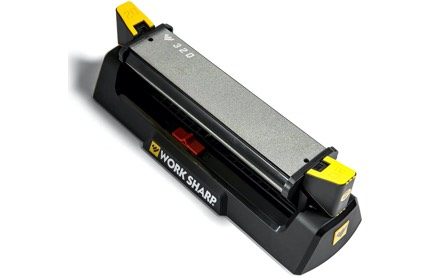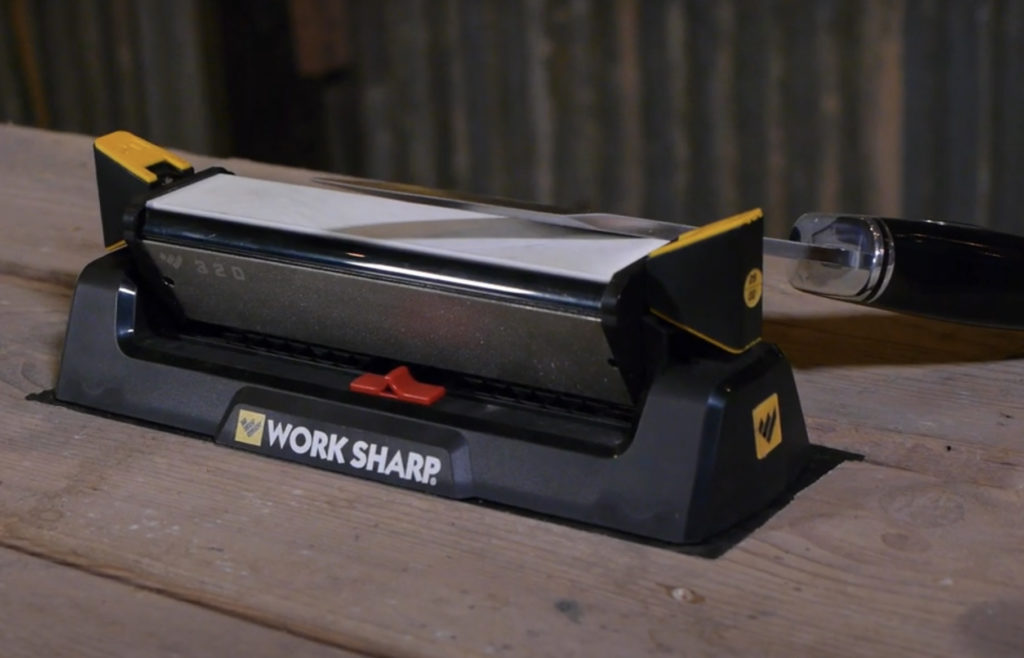I’m not a big fan of gadgets and “sharpening systems” that lock you into a specific way of putting an edge on a blade. I advocate learning to free-hand an edge on a strop or a diamond stone, because once you learn that skill, it’s easily transferrable to many different kinds of sharpening media.
As I demonstrate in this video review, the $45 Work Sharp Benchstone Knife Sharpener is a great tool for learning to develop your sharpening technique, because it gives you a set of training wheels for getting started.

Work Sharp Benchstone Knife Sharpener
After you’ve put enough time in with this device, you should be able to fairly comfortably apply the same skills to a regular bench stone, pocket stone, or stropping surface. There is no magic trick or secret sauce — it’s all in how much you practice.
Learn more:
- How to sharpen a knife for preppers
- Best knife sharpening stones
- Best sharpening strops and compounds
A word about edge angles
I talk a little bit about edge angles in the video, and I want to unpack some of that here. There is a bit more to that discussion that’s worth saying, but we cut that footage out in the interest of keeping the video focused on the product and not on general sharpening theory.
As I briefly mentioned in the review, I personally advocate a very-slightly-sub-20-degree sharpening angle for many modern knives that have high-end, tough knife steels like CPM3V, 80crV2, 5160, and even higher end stainlesses like S35VN. This is because these steels are really tough and can support a thinner edge without failing.
So if I have a camp knife made in a modern, high-carbon steel that I’m unlikely to be chopping with, I’ll often put a 17-degree edge on it. (That’s 17 degrees on a side, or 34 degrees inclusive.) I haven’t had any bad results with this, and the resulting edges cut and slice like a beast.
If you’re likely to be doing some chopping, though, go ahead and move up to the 25-degree edge angle. This is a more traditional “camp knife” edge angle that gives you a good balance between slicing ability and edge durability for most steels. Also use this angle if you don’t really know much about the quality of the steel and/or heat treatment that you’re working with, and don’t want to risk pushing it too far.
Work Sharp does sell 17-degree and 15-degree angle guides for this stone. Those are worth looking into if you’re going to be sharpening chef knives, a hollow-ground EDC fixed blade slicer, or you want to follow my lead and take your high-end 80crV2 camp knife down to 17 degrees.

